Earlier this month, I had the privilege of both speaking and attending the AI Engineer World’s Fair in San Francisco. If you’re wondering what the future holds for AI and software, this conference is a good way to get a pulse on the future of the industry.
Why Should You Care?
Unlike research-focused events such as NeurIPS or CEO-oriented conferences like TED AI, the AI Engineer World’s Fair is uniquely geared toward the builders turning AI research into tangible products. That makes it a good crystal ball on the future of AI. The last summit, for example, was one of the early signs that the Model Context Protocol (MCP) was reaching a tipping point.
Brace Yourself For…
With that framing, here’s what you should be keeping an eye on:
- Coding Agents (aka SWE Agents): According to the organizers, the track on SWE agents and tools like Claude Code were the most packed of the conference. That’s a pretty strong signal if ever there was one.
- Everything is a Spec: Sean Grove’s (OpenAI) talk challenged the traditional focus on code in software engineering. In the future, “specs” will dominate and introduce a broader audience of stakeholders.
- Cursor for X: Sarah Guo (Conviction) broke down how Cursor’s success can be turned into a recipe for other AI startups building application on top of foundation models.
Essential Viewing
If you’re short on time, these two sessions will give you a broad overview of the important trends in the AI and AI Engineering landscape:
- State of AI Engineering 2025 Survey: This was an overview of the challenges and priorities in building AI products as voted on by the engineers building them.
- Trends Across the AI Frontier: This talk was a great summary of where the state of the art in AI is advancing across four frontiers: Reasoning vs. Non-reasoning, Open Weights vs. Proprietary Models, Cost, and Speed.
What Hasn’t Changed: Execution is Still King
Before diving into the emerging trends, it’s useful to ask what isn’t changing. At the top of that list is execution because competition in this space can come from anywhere. As Sarah noted in her talk, Cursor is a prime example:
“Cursor did not invent code completion. They did not invent the model. They did not invent their product surface area. They just out-executed on every dimension.”
Four Key Emerging Trends
Four key themes stuck out for AI product builders: Social-Data Network Effects, Prompts as the New Patents, Software is Content, and Domain Experts > Tech Experts.
Social-Data Network Effects
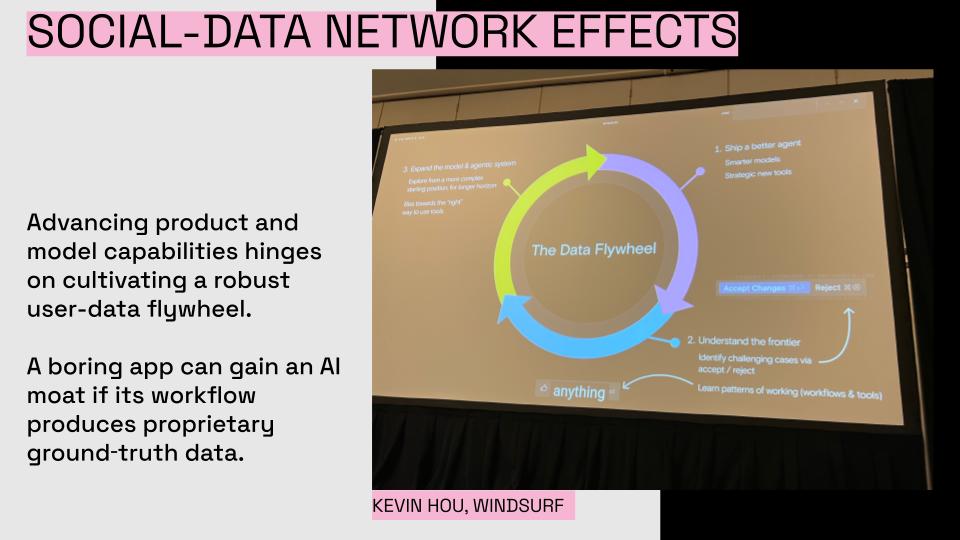
Advancing product and model capabilities increasingly hinges on cultivating a robust user-data flywheel. Unlike classic network effects where more users mean more reach (like early Facebook), here, user engagement and data help define the capability frontier of AI and ultimately drive improvements to the product functionality itself. This isn’t new to AI but we should expect to see it as a common pattern. Kevin Hou from Windsurf presented a great “Data Flywheel” diagram illustrating this.
Prompts (and Evals) are the New Patents
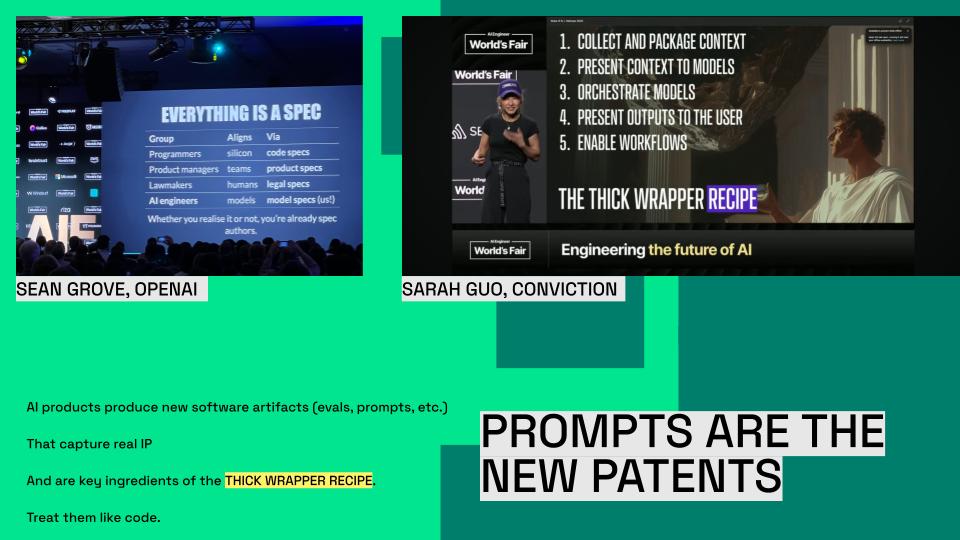
These crucial data flywheel insights are distilled into new software artifacts like evals and prompts. These artifacts capture real intellectual property (IP) even though they are not code. As we result, they should to be treated with the same care as traditional IP (i.e. saved and versioned just like code).
Software is Content
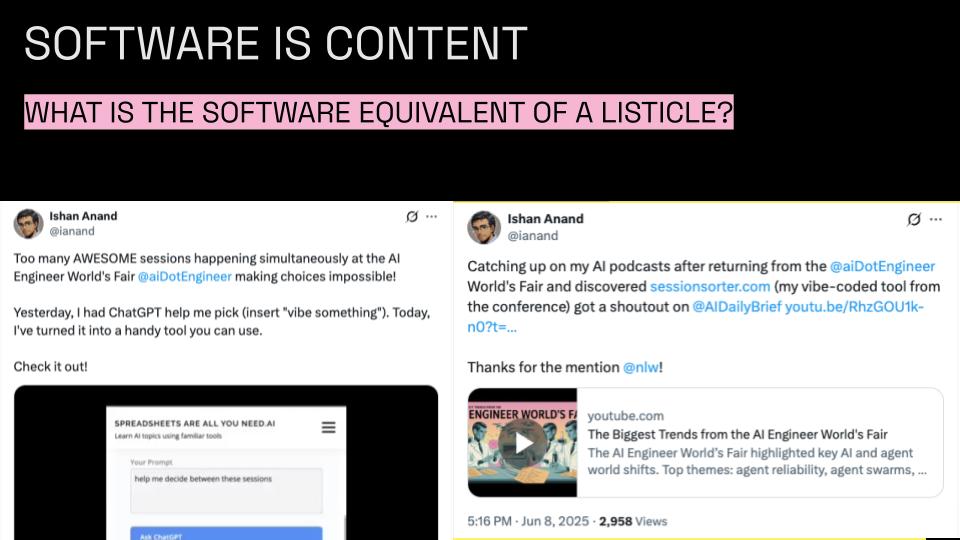
On the first day of the conference, I had trouble choosing sessions, so I dumped the descriptions into ChatGPT to help me decide. By day two, I had “vibe-coded” this into a tool called SessionSorter.com that anyone could use and it was picked up by the AI Daily Brief to illustrate how packed the conference was with content. The point? This is software that wouldn’t have existed without vibe coding and was used like content to illustrate an idea the same way a tweet or photo might have done. As AI makes building easier, expect more software to be created and used like content. What’s the software equivalent of a listicle?
By the way, if you want to catch up on the important talks from the AI Engineer World’s Fair, I’ve improved SessionSorter.com with deep links into YouTube for every talk that was in the live stream. To use the AI features, you’ll need your own OpenAI API key but the source is on GitHub if you want to check it out.
Domain Experts > Tech Experts?
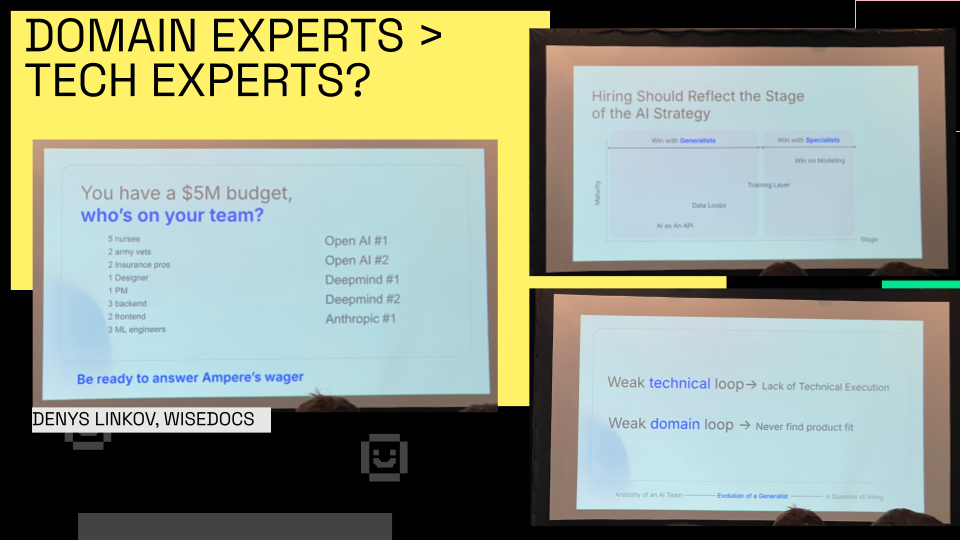
The “Tiny Teams” track got a lot of deserved attention, but a session by Denys Linkov (WiseDocs) on building modern AI teams in the enterprise was particularly insightful. He open with an interesting thought experiment: If you had a $5M budget, who’s on your team? Is it a roster of top AI researchers from OpenAI, DeepMind, and Anthropic, or is it a team of nurses, army vets, insurance pros, designers, and a few ML engineers? As technology becomes easier to build with AI, domain expertise might become more important for unlocking product-market fit than pure AI expertise.
The Big Picture: Software is Experiencing a Value Chain Disruption
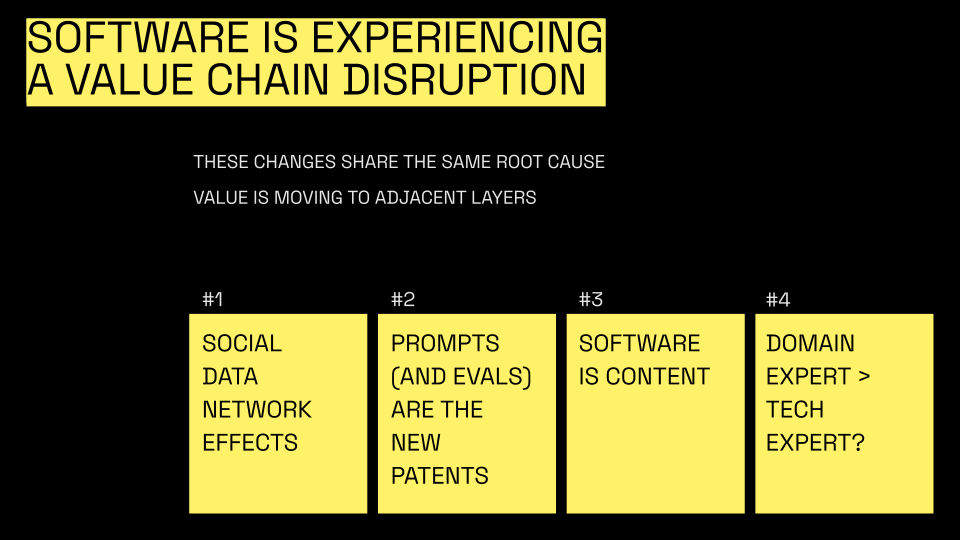
These four themes share a root cause: The manufacturing of software is undergoing a value chain disruption. This is similar to how Uber disrupted taxis or Airbnb disrupted hotels as shown below.
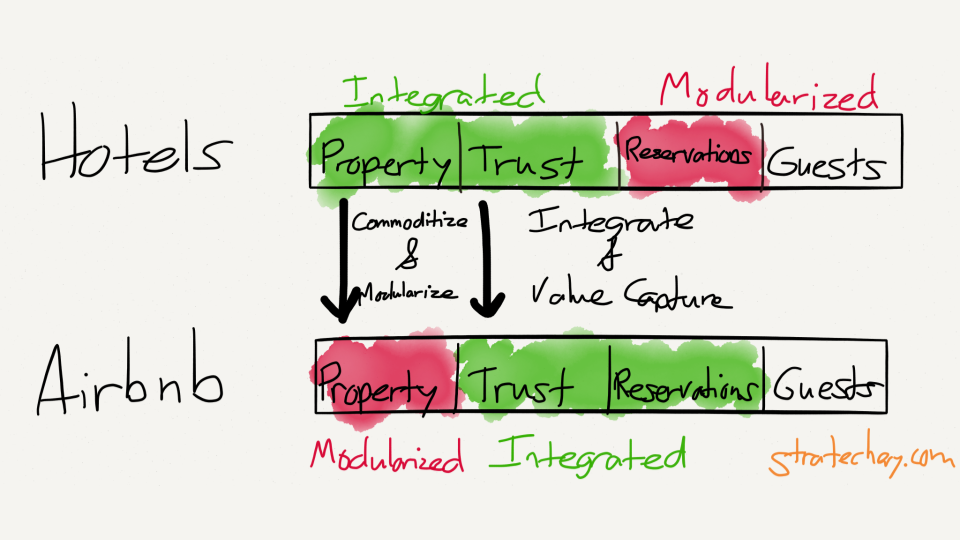
As explained by Ben Thompson of Stratechery, what tends to happen is in these value chain disruptions is:
- One layer of the incumbent value chain becomes commoditized and modularized.
- Another layer, often adjacent, integrates and captures the value.
Post-AI, it’s clear there’s a disruption, particularly in the “Code” part of the value chain, with “Spec” (prompts, evals) becoming more critical. It’s not hard to imagine “specs” as being the latent capital of software needs that would have been unmet and unimplemented if not for vibe coding (just as unused rooms were latent capital for Airbnb or unused cars were for Uber).
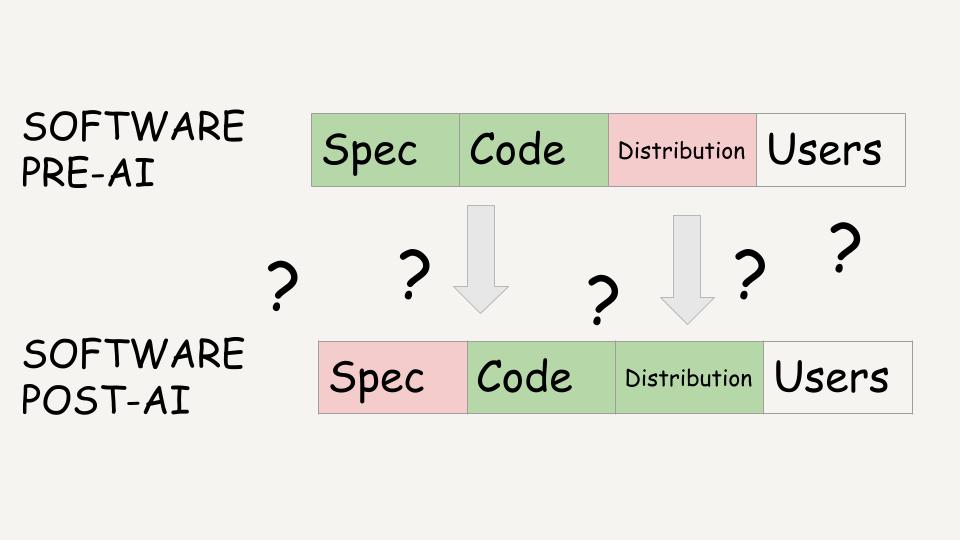
Where exactly the value will reintegrate is still unfolding, but the shift is viscerally undeniable for anyone who has used these tools.
So Long, and Thanks for All the Fish
A huge thanks to Swyx, Ben, and the entire crew for an incredible AI Engineer World’s Fair. I can’t imagine the work that went into it, and I’m already looking forward to next year.